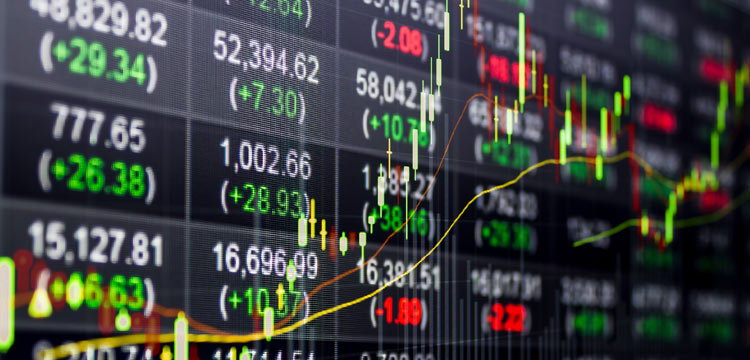ETMarkets Smart Talk: Some readjustment in the capital gains tax across asset classes is possible: Anand Rathi
By EconomicTimes
Some readjustment in the capital gains tax across asset classes is possible.
At any case, most indirect taxes apart from customs, are outside the direct purview of the Union Budget,” says Anand Rathi, Founder & Chairman, Anand Rathi Group.
In an interview with ETMarkets, Rathi said: During 2023, we expect rupee to depreciate against U.S. dollar by 3-6% and stronger depreciation of rupee against euro and possibility pound sterling and yen as well” Edited excerpts:
How do you sum up 2022 and how do you see markets in 2023?
During 2022, the financial markets were driven mainly by two factors – macroeconomic policy changes and geopolitics.
Inflation took the centre stage, and this resulted in rapid tightening of both monetary and fiscal policies at paces not seen for several decades.
The first major war in Europe after the Second World War also negatively impacted financial markets including equity markets.
My expectation is that the year 2023 would be a better year than 2022.
The consensus expectation is currently factoring in significant global growth slowdown and slow pace of fall in inflation rate during 2023.
In my view, both growth and inflation rates would surprise positively during the year.
Consequently, while the major central banks may not start cutting the policy rates during 2023, the stance of monetary policy would move from extreme tightening to the neutral zone.
All these factors would be positive for the equity markets.
However, recession fear would continue to loom large and that can depress investor sentiments.
Also, the outlook on Russia Ukraine war remains considerably uncertain.
In addition, the rising global protectionist trends can significantly slowdown global trade with negative implications for growth and corporate earnings.
These are downside risks to the equity market.
Overall, while I remain positive on equity market outlook for 2023, I expect the returns during 2023 to be in-line or below the long-term average.
Do you think the sectors that worked well in 2022 will continue to perform in 2023 as well?
In the Indian equity market, investment theme and financials were in flavour during 2022 while consumption theme and globally oriented sectors did relatively badly.
In the initial part of 2023, the same themes might continue but eventually with the likely pickup in rural consumption, greater investor caution and relative value play, the consumption theme is likely to come in more prominence.
At the same time, with rising interest rate, impact of increased global protectionism on export oriented sectors and likely slowdown of growth during 2023 can result in under performance of both investment theme sectors and a part of the financials.
Stronger growth in China can increase demand for commodities and this might improve the situation of some of the global cyclicals.
Where do you see the rupee headed in the year 2023?
Since 2020, the movement of the rupee has been aligned with the weakening and the subsequent strengthening of the U.S. dollar.
Interventions by the Reserve Bank of India in the foreign currency market, however, soften the appreciation of rupee between early 2020 and early 2022 and the weakening of rupee thereafter.
In 2022, most hard currencies depreciated significantly against the U.S. dollar.
As rupee depreciated.against these non-dollar hard currencies during 2022.
Going forward, it is likely that non-dollar hard currencies would regain some of the lost ground and appreciate against the dollar.
Consequently, the rupee is likely to depreciate against these non-dollars currencies during 2023.
At the same time, the sharp widening of India’s goods trade and thereby current account deficit, may result in modest depreciation of rupee against U.S. dollar as well.
During 2023, we expect the rupee to depreciate against the U.S. dollar by 3-6% and tronger depreciation of rupee against euro and possibly pound sterling and yen as well.
Few headwinds which India has to battle in the first 6 months of 2023?
Rising interest rate is one of the biggest headwinds for India currently as also the rising current account deficit.
High frequency data including FDI inflow, proposed investment, implemented investment, primary fund raising in the equity market and primary fund raising in the bond market suggest significant slowdown of investment activities.
Slowing investment is a major near-term challenge for India. On the global front, rising protectionism and possible bounce back of commodity prices as Chinese demand picks up, can also put India in a spot of bother.
What are your expectations from Budget 2023?
Apart from further simplification and procedural changes, we do not expect significant changes in the budget regarding direct taxation.
Some readjustment in the capital gains tax across asset classes is possible.
In any case, most indirect taxes apart from customs, are outside the direct purview of the union budget.
While the intention of the government would be to effect significant fiscal consolidation, the process might remain slow this year resulting in the fiscal deficit for the next financial year being pegged around 5.8-5.9% of GDP.
The discontinuation of free additional food grain distribution outside the PDS would substantially reduce effective food subsidies while making the food grain under PDS free would marginally increase outgo on this account.
In order to boost rural income and employment, fund freed-up from food subsidies may get deployed in other rural oriented schemes.
With rural demand being behind urban demand in the recent past, we expect the budget to take measures to alleviate this situation.
Improving productivity in agriculture and allied activities coupled with rural employment generation are also likely to be the focus of the budget.
We also expect greater focus on production linked incentive schemes with more sectors coming under the ambit of this project and additional budgetary allocation under the scheme.
Which sectors could remain in the spotlight in the Budget 2023 which is also the last Budget before India goes to poll in 2024?
We expect major focus on agriculture and allied activities, infrastructure and manufacturing activities under the PLI scheme. The renewable energy related segments may get considerable attention.
Do you see interest rates peak out in 2023. If yes, what kind of impact could we see on currency and equity markets?
I think that the policy rate in India is either already at peak or very close to that.
The rates have already picked up in the bond market. In the banking sector, however, transmission of recent monetary tightening so far has been to the extent of 30-40% in deposit or lending rates.
While full transmission of monetary policy tightening in the banking sector almost never happens, some more pass through during 2023 cannot be ruled out. So, deposit/lending rates have scope for increase.
Higher bond rules have increase the discounting rate in the equity market and the process has resulted in derating of valuation multiples.
In view of this, the likely modest increase in interest rate in the banking sector may not have much impact on the equity market.
Similarly, the foreign exchange market is greater aligned with the bond market rather than the credit market.
For the same reason, we do not expect a significant impact of banking sector interest rates on the foreign exchange market.
At the global level, we expect a level of monetary policy divergence between advanced and emerging market countries during 2023.
While the policy rates in most emerging market countries including India seem to be at or close to the peak, the same may not be true for many of the advanced countries.
This divergence should result in depreciation of emerging market country currencies including Indian rupee versus the hard currencies during 2023.
Similarly, the rate divergence can be mildly negative for emerging market equities.
However, a major part of such divergence seems to be already in price both in the foreign exchange and equity markets.
insidesmarket.com




